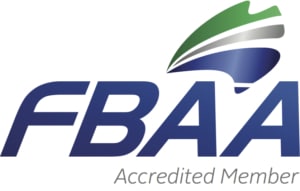Five things lenders look for in a development finance proposal
Written by David Lovato – CPC Development Lending Solutions
Jan 2024
When a property developer applies for finance, the lender asks themselves one basic question: how likely is the applicant to repay the loan in full and on time?
To answer that question, the lender is going to pay close attention to everything from your financial statements to your exit strategy, so they can get a clear picture of both you and your project.
With that in mind, you and your broker should present your application in a way that makes it easy for the lender to review your scenario and understand its positive features. That will increase your chances of being approved and receiving the most favourable terms.
Here are the five most common things lenders look at with a property development finance application:
1. Your finances
The lender will take a close look at your financial statements, to understand what your financial position is right now and how it’s likely to evolve throughout the process.
You’ll need to prove you’ll have sufficient cashflow to pay your bills throughout the development project and meet your obligations to the lender. As part of that process, you’ll need to provide a feasibility study that lays out all your expenses and income – and, just as importantly, when those transactions are expected to occur.
2. Your project
The lender knows that the more successful your development is, the more likely its loan is to be repaid. So the lender will scrutinise:
- The location, design and intended use of your development
- The construction plan and schedule
- The contractors and materials you plan to use
Naturally, the lender will want to see proof that you’re planning to comply with building, zoning and environmental rules.
The lender will also want to know how much demand your properties are likely to receive from potential buyers. So you’ll need to provide a market analysis; the more detailed and fact-based you make this report, the better it will be received.
You’ll also need to provide a document outlining the project’s potential risks and your plan for responding to them. Don’t make the mistake of omitting risks in an attempt to avoid scaring the lender; instead, be upfront, so you can prove you would be a safe pair of hands if problems occurred during the project.
3. Your exit strategy
To reassure the lender, you will need to explain:
- How you will repay the loan – will you raise the funds through sales, through refinancing or in some other way?
- When you will repay the loan – will you make one lump-sum payment at the end of the build or will you make a series of payments?
4. Your track record
As part of its due diligence, the lender will want to know what projects (if any) you’ve completed in the past and how similar they are to this specific proposal.
The more experience and success you can point to, the more creditworthy you’ll appear in the eyes of the lender.
5. Your security
If you were unable to repay the loan, the lender will need to know what recourse it would have.
That includes knowing what assets it could seize, how easy they would be to sell and what their resale value would be.
Crowd Property Capital is a property development finance specialist. We help property developers overcome their funding challenges by sourcing loans for land, construction and residual stock. Contact us at [email protected] or fill in this form.














